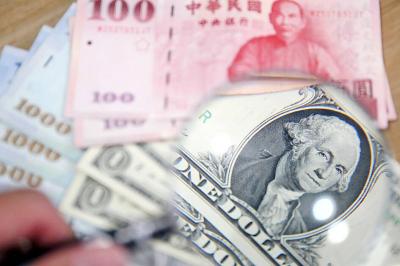In the chaos that ensues after a natural disaster, getting vehicles to aid workers for transporting refugees can be impossible, as roads are frequently blocked off.
An alternative is to airlift them in sections and construct them on the ground, says Yuki Liu, chief executive officer of car designer OSVehicle.
The idea is unworkable in the case of a standard car or four-wheel-drive, but possibly not for the Tabby Evo, an electric vehicle that can be shipped in parts and put together in an hour.
The Tabby Evo is the latest version of a “platform” car, which provides the bare bones of an electric vehicle — including the frame, suspension and steering systems, brakes, seats and wheels — on which companies, relief agencies and universities, among others, can build and tweak their own vehicle by adding doors, interiors and a shell.
The skeleton cars were created by Yuki’s brother, Tin Hang Liu, and OSVehicle wants them to be an easier route into the automotive industry. This would take away the necessity for years of research and development and hundreds of millions of dollars in investment.
Along with vehicles for aid agencies, the company is working on projects where fleets are used for car-sharing or as delivery vehicles for packages.
“We started to think about how to change automotives, because it is the most complex industrial product that has not changed for [some] time. Our background in automotives made us understand that there was a lot of need for innovation there, because everything was still made in the same way,” Yuki said.
Tin and Yuki, who are from Italy, followed their father into the motor industry. They soon became interested in the idea of circular economies, where resources are kept in use for as long as possible.
In 2008, Tin was working in Silicon Valley when he came in contact with open-source hardware — designs for machines and devices that have been publicly released. He applied the principles to cars, where one vehicle would be able to achieve a number of functions.
The Tabby Evo is the second version of the skeleton car. Available with two or four seats, the bare vehicle is charged using a wall plug and has a range of 120km, depending on the type of body attached to it, Yuki said. The maximum speed is 130kph, but this can be capped at a lower number depending again on what it is being used for.
When a company buys fleets of the vehicles — the minimum is 200 — they design the final vehicle and then buy and fit the seats, doors and other components separately. Batches of more than 500 four-seater vehicles cost just under US$5,000 each, although this price increases if the number ordered is less, chief financial officer Alberto Loddo said.
“To make a new car model from scratch, you would need five to seven years and US$100 million to US$200 million. With our platform, we want to shorten that to one-and-a-half to three years depending on the complexity of the vehicle and to US$3 million to US$20 million,” Loddo said.
An alternative is to download the designs for free from the OSVehicle Web site, in line with the open-source principle on which the company was founded.
The OSVehicle units consist of parts that can be easily swapped without throwing out other working parts, therefore expanding the vehicle’s lifespan, Yuki said.
Its core unit contains the most complex parts of a vehicle that means it is stable and ready to use, she said.
Loddo compared it to the Android operating system on mobile phones, where developers can use the software as a base on which to build apps.
“The automotive world and the tech world are merging, but the only thing is that the automotive world is very slow and big and not so fast to adapt to change,” he said.
The company makes money by selling the vehicles and also by designing and engineering final products for firms that want to make new vehicles using the “platform.” So far, 10 projects have been worked on, ranging from fleets of hundreds to those with thousands of cars, although the exact details are under wraps.
A two-seater car by an Italian IT company using its own information and entertainment system is to be launched in June.

The US dollar was trading at NT$29.7 at 10am today on the Taipei Foreign Exchange, as the New Taiwan dollar gained NT$1.364 from the previous close last week. The NT dollar continued to rise today, after surging 3.07 percent on Friday. After opening at NT$30.91, the NT dollar gained more than NT$1 in just 15 minutes, briefly passing the NT$30 mark. Before the US Department of the Treasury's semi-annual currency report came out, expectations that the NT dollar would keep rising were already building. The NT dollar on Friday closed at NT$31.064, up by NT$0.953 — a 3.07 percent single-day gain. Today,

‘SHORT TERM’: The local currency would likely remain strong in the near term, driven by anticipated US trade pressure, capital inflows and expectations of a US Fed rate cut The US dollar is expected to fall below NT$30 in the near term, as traders anticipate increased pressure from Washington for Taiwan to allow the New Taiwan dollar to appreciate, Cathay United Bank (國泰世華銀行) chief economist Lin Chi-chao (林啟超) said. Following a sharp drop in the greenback against the NT dollar on Friday, Lin told the Central News Agency that the local currency is likely to remain strong in the short term, driven in part by market psychology surrounding anticipated US policy pressure. On Friday, the US dollar fell NT$0.953, or 3.07 percent, closing at NT$31.064 — its lowest level since Jan.

The New Taiwan dollar and Taiwanese stocks surged on signs that trade tensions between the world’s top two economies might start easing and as US tech earnings boosted the outlook of the nation’s semiconductor exports. The NT dollar strengthened as much as 3.8 percent versus the US dollar to 30.815, the biggest intraday gain since January 2011, closing at NT$31.064. The benchmark TAIEX jumped 2.73 percent to outperform the region’s equity gauges. Outlook for global trade improved after China said it is assessing possible trade talks with the US, providing a boost for the nation’s currency and shares. As the NT dollar

The Financial Supervisory Commission (FSC) yesterday met with some of the nation’s largest insurance companies as a skyrocketing New Taiwan dollar piles pressure on their hundreds of billions of dollars in US bond investments. The commission has asked some life insurance firms, among the biggest Asian holders of US debt, to discuss how the rapidly strengthening NT dollar has impacted their operations, people familiar with the matter said. The meeting took place as the NT dollar jumped as much as 5 percent yesterday, its biggest intraday gain in more than three decades. The local currency surged as exporters rushed to